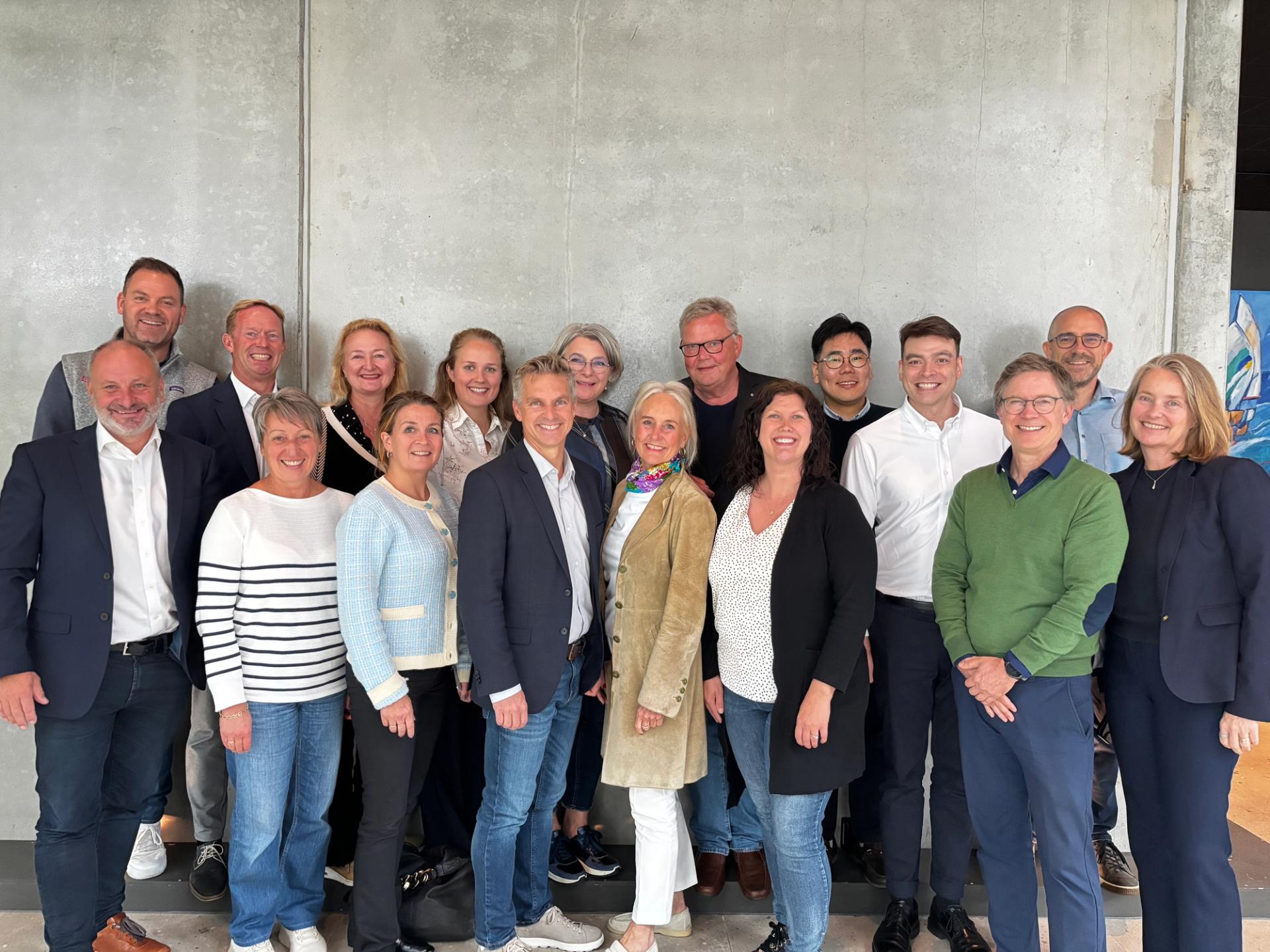Sustainability heats up in Norwegian data centre industry

Today data centres account for 2 per cent of the world’s annual CO₂ emissions and 3 per cent of power consumption. As a world leader in digitalisation, Norway has long recognised the need to create a sustainable data centre industry.
100 per cent renewable energy
In the past decade, Norway has focused on the energy coming into data centres. To reduce their carbon footprint, data centres use 100 per cent renewable energy, which is not difficult given Norway’s large-scale production of clean hydropower. In addition, energy efficiency measures have resulted in record-low power usage effectiveness (PUE) scores.
Now the sector is adding another dimension to sustainability.
“Focus is shifting to the energy exiting the data centres. In other words, the waste heat. This is one of several circularity aspects growing in importance,” says Benedicte Fasmer Waaler, Investment Manager for data centres at Invest in Norway, the official investment promotion agency of Norway.
No wonder that waste heat has become a hot topic. Up to 85 per cent of the energy going into a data centre leaves as waste heat. This is a lot of lost thermal energy that can be reused in other industries.

Tried-and-true urban solution
One company addressing this issue is Stack Infrastructure (formerly DigiPlex), a data centre operator with a focus on sustainability. The waste heat from its data centre in Ulven, a bustling section of Oslo, is being used in new district heating production. This corresponds to the energy needs of approximately 5 000 Oslo apartments.
“We are working with Fortum Oslo Varme, Norway’s largest district heating supplier. Not only have we been able to reduce our waste heat, but thanks to this collaboration, our cooling machines are using much less power now. During periods of the year, this gives us the lowest running PUE of all DigiPlex data centres in Norway. It’s a win-win situation,” says Halvor Bjerke, CEO, Nordics, Stack EMEA.

Pioneering rural alternative
While waste heat recovery for district heating is not new, it requires data centres to be located in urban areas, near the users. But Norway has many data centres in rural locations, far from city utility services. This creates both a challenge and an opportunity.
“Rurally located data centres are looking for ways to reuse their waste heat. Meanwhile, Norway’s land-based fish farms want to increase their sustainability and operational efficiency. These two industries are a match made in heaven,” says Fasmer Waaler.
The data centre operator Green Mountain is the first to tap Norway’s competitive advantage in aquaculture. The company recently announced that it has entered into agreements to reuse the heat from two of its rural data centres in land-based lobster and trout farming.
“These projects are the first of their kind and have garnered worldwide attention. The concept can be applied in any country,” says Tor Kristian Gyland, CEO of Green Mountain. (Editor’s note: Gyland has stepped down as CEO and is now an Executive Consultant at Green Mountain.)
“We view waste heat as a resource,” he says. “Since some data centres are rural, we explored how we could reuse our waste heat other than in district heating.”
“We view waste heat as a resource. Since some data centres are rural, we explored how we could reuse our waste heat other than in district heating.”
Tor Kristian Gyland
CEO, Green Mountain
“Then we read an industry report that laid out 50 alternative ideas for this. We did our homework and landed on aquaculture as the most optimal solution based on current technology,” he adds.

Creating a circular ecosystem
Gyland is referencing a study by Lyse Energy that mapped potential users of data centres’ waste heat. Others in the sector, such as Ringerike municipality, have conducted similar studies. Such mapping is part of a broader Norwegian effort to increase circularity through cooperation.
“Intra-industry collaboration is crucial. The only way to achieve true sustainability is to create a circular ecosystem. Data centres must work not only with each other, but together with other industries, industry organisations and municipalities,” says Fasmer Waaler.
To this end, the Norwegian Data Centre Industry Association was recently established. Halvor Bjerke of Stack has been there from the start as one of the co-founders.
“We need to create a circular ecosystem strategy that works in a business sense. Waste heat from traditional data centres is a constant, predictable source of heat. It’s a valuable resource that can be part of a synergistic relationship,” he says.
In addition, the association has joined several other European data centre industry associations and companies in signing the Climate Neutral Data Centre Pact, a commitment to be climate neutral by 2030.
Norwegian government on board
“We see the government strengthening its commitment to developing a sustainable data centre industry,” notes Fasmer Waaler.
She points to several actions, including the publication of an updated national data centre strategy. In the strategy, the government states its intention to compile a national heat map to ensure better utilisation of waste heat from data centres. It also calls for data centre operators to conduct a cost-benefit analysis of waste heat recovery when establishing or upgrading their facilities.
“The push for sustainability in the data centre industry is coming both from within and without. But ultimately, the customers have the final say, and they are increasingly choosing to locate in Norway thanks to our high sustainability profile,” concludes Tor Kristian Gyland of Green Mountain.



